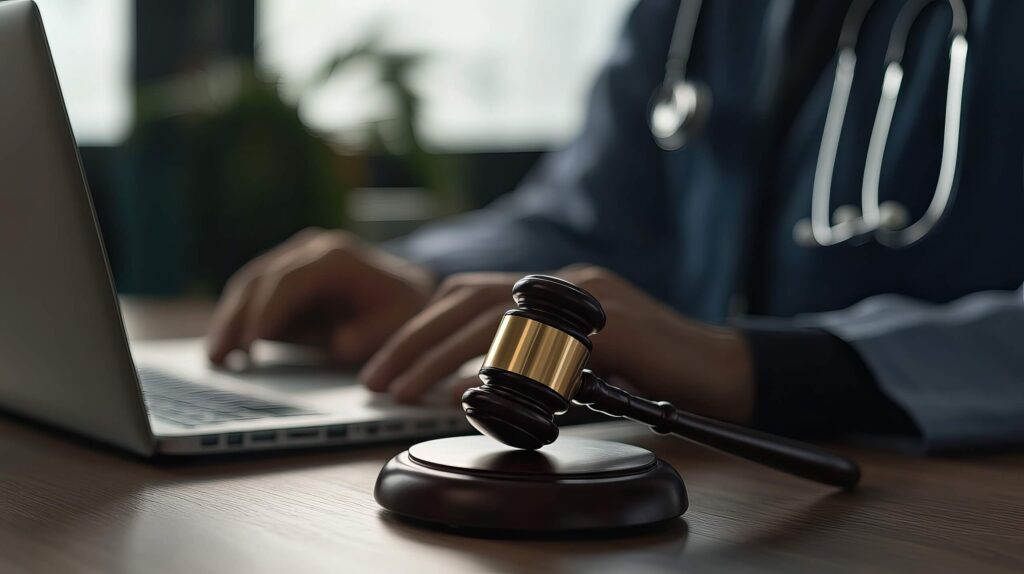If you suspect your medical records have been altered, you could be facing more than just a clerical error—your health, legal case, and peace of mind may be at risk. Medical documentation is the cornerstone of both patient care and legal claims. Knowing what to do when you suspect tampering can make all the difference. This guide explains how to spot altered records, secure evidence, and take appropriate action to safeguard your rights.
Understanding the Basics
What Are Medical Records?
Medical records include all documentation about your diagnosis, treatment, and care. These can be paper charts, electronic health records (EHRs), test results, billing records, or physician notes.
Why Accuracy Matters
Accurate medical records ensure proper care, support insurance claims, and often serve as critical legal evidence. If records are altered, your safety and your legal options may be compromised.
What Is Medical Record Tampering?
Defining Tampering
Medical record tampering refers to any unauthorized or inappropriate change, deletion, or addition to your records. Tampering can be intentional or unintentional, and both can have serious consequences.
Examples of Record Alteration
Some common forms of tampering include inserting notes after the fact, deleting information, changing medication details, or amending entries without proper documentation.
Why Medical Record Integrity Is So Important
Consequences for Patient Care
If your medical history is inaccurate, you could receive incorrect treatment or miss important follow-up care. This can directly affect your health outcomes.
Impact on Legal Cases
When you pursue legal action for malpractice or personal injury, your medical records may be the main evidence. Altered or missing information can make or break your case.
Recognizing the Signs of Altered Medical Records
1. Reviewing Paper Records
When looking at physical records, inconsistencies can include mismatched dates, missing pages, or handwriting that appears out of place. Watch for ink or pen color changes and sections that seem inserted.
2. Identifying Problems in Electronic Health Records
With EHRs, be alert for edits that don’t follow the system’s normal amendment process. Check for digital time stamps that seem unusual or edits made after your treatment date.
3. Understanding Audit Trails
Most electronic records systems maintain an “audit trail,” which logs every time a record is accessed or edited. Requesting the audit trail can help determine if unauthorized changes were made and by whom.
Taking Immediate Action If You Suspect Tampering
1. Requesting Certified Copies
If you suspect your records have been altered, submit a written request for certified, unredacted copies from your provider. Ask for both printed and electronic versions, and request the audit trail if dealing with digital records.
2. Comparing Versions of Your Records
Carefully compare new copies with any older versions you possess. Note every difference, no matter how small, and record them in a dedicated log for future reference.
3. Documenting Discrepancies
Create a written record with the date, the nature of each discrepancy, and your observations. Take photographs or scans of any irregularities to create a verifiable record.
4. Notarizing Your Evidence
Take altered or suspicious documents to a notary public. Notarized copies confirm what you received and when, strengthening your evidence if a dispute arises later.
Securing a Chain of Custody
What Is a Chain of Custody?
A chain of custody is a chronological paper trail documenting every person who handled your records. This helps ensure the evidence is credible and has not been altered after you received it.
How to Maintain the Chain of Custody
Each time your documents change hands, record the date, time, name of the individual, and the purpose. Keep your originals and notarized copies in a secure place to prevent loss or further tampering.
Getting Professional Help
1. Consulting a Legal Expert
An attorney who specializes in medical malpractice or health law can review your documentation, advise on next steps, and communicate with providers or courts on your behalf.
2. Using Forensic Analysis
Forensic document examiners analyze handwriting, ink, and paper on physical records. For EHRs, a digital forensic expert can examine audit trails and metadata to determine if tampering occurred.
3. Independent Medical Record Review Services
These services can provide impartial evaluations and detailed reports, and can often testify as expert witnesses if your case proceeds to court.
Understanding Your Rights
Patient Rights Under HIPAA
HIPAA grants you the right to access your records and request corrections. Providers must respond within a set period. If you are denied access or suspect a violation, you can file a complaint with the Office for Civil Rights.
When to Report Suspected Falsification
If you believe records were deliberately altered to cover up negligence, you should notify your healthcare provider in writing. You can also contact your state medical board or report criminal activity to law enforcement.
Legal Steps and Considerations
What Happens When You Take Legal Action?
A legal case involving altered records typically requires careful evidence gathering, depositions, and expert testimony. The earlier you begin the process, the better preserved your evidence will be.
Statute of Limitations
Every state has time limits for bringing medical malpractice or personal injury claims. Acting quickly after discovering tampering is critical for protecting your legal options.
Practical Guidance for Protecting Your Case
Why Prompt Action Matters
Delays can make it harder to collect evidence, and records may be lost or destroyed over time. Act immediately if you have any suspicions.
Step-by-Step Protection Plan
First, obtain certified, unredacted copies of all relevant records. Next, review them against older copies and carefully log any changes or discrepancies. Notarize key documents and start a detailed chain of custody. If needed, consult legal and forensic experts to further protect your interests.
Common Obstacles When Proving Tampering
Patients may experience delays, refusals, or incomplete disclosures from providers. Accessing audit trails or securing notarized documents can take time. It may also be difficult to prove the motive or impact of changes, underscoring the need for expert help and meticulous documentation.
Frequently Asked Questions
What should I do if I think my doctor changed my medical records?
If you suspect your medical records have been altered, your first step should be to formally request certified, unredacted copies of all your medical records from your healthcare provider. Carefully review the records for any discrepancies compared to earlier versions you may have. Keep a detailed record of your findings, and contact a lawyer experienced in healthcare law to help you understand your rights and options for next steps.
Can I see who accessed or edited my electronic health records?
Yes, most electronic health record (EHR) systems keep what is called an audit trail. This digital log shows who accessed your records, what changes were made, and when. You have the right to request the audit trail from your healthcare provider, which can be valuable evidence if you suspect tampering.
How can I prove that my medical records have been tampered with?
Proving tampering usually involves comparing certified copies of your current records to any older versions you have, documenting every difference in detail, and requesting the audit trail for electronic records. Notarizing your records and starting a chain of custody log will strengthen your evidence. In more complex cases, a forensic document examiner or a digital forensics expert may be needed to analyze handwriting, ink, or metadata and provide a professional opinion.
Can I sue for altered or falsified medical records?
If tampering with your medical records resulted in harm to your health or negatively affected a legal case, you may have grounds to pursue legal action. An experienced attorney can review your evidence, help you understand your state’s laws and statute of limitations, and guide you through the process of seeking damages or other remedies.
Who can help me if I suspect my records have been changed?
A lawyer who specializes in medical malpractice, patient rights, or healthcare law is your best resource. Additionally, forensic document analysts and independent medical record review services can provide expert analysis and testimony if your case requires it.
Contact Purchase, George & Murphey, P.C. Today
Suspected tampering of medical records is a serious concern that requires prompt, methodical action. By securing certified copies, documenting everything, notarizing suspicious evidence, and seeking expert help, you give yourself the best chance to protect your health and your legal interests.
If you believe your medical records have been altered or tampered with, contact Purchase, George & Murphey, P.C. right away. Your future care and your case may depend on the steps you take now.













